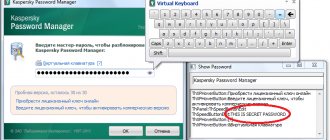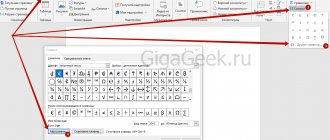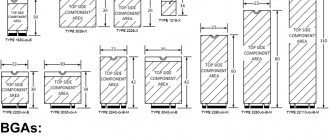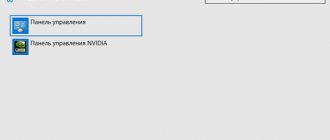Quotation marks are a symbol, a punctuation mark, which must have a pair. It highlights quotes from the general text, words taken from other texts, or segments of words. It is also used to highlight the irony or figurative meaning of a word, its unusualness, or a reference to something.
If the quotation uses another expression enclosed in these symbols, then the latter will be of a different type. For example: I received a telegram: “I’m arriving this evening. I’ll stay at the Troitsk Hotel.”
several types of such punctuation marks in punctuation
- “Christmas trees” or “French” are also typographic;
- “Paws” or “German”;
- “English double” and “single” (this punctuation mark is rarely used in Russian literature and writing).
“Herringbones” are used mainly for printing. “Paws” – in texts written by human hand. There are also “computer” or typewritten ones, in which the design of the opening and closing quotation marks is completely indistinguishable from each other. They are typed using the keyboard on a computer.
Microsoft Word uses French and English by default.
How to insert on your phone?
The keyboard on the phone differs from the usual layout for PCs and laptops, and therefore has many hidden functions that allow you to operate with a large number of characters.
Iphone
Hot keys on an iPhone are activated by long pressing on the corresponding keyboard field. To get the required symbol, open the number pad and hold down the button. Select Christmas trees in the symbol menu that opens.
Android (Samsung, etc.)
Touch and hold the straight quotes field. An additional set includes Christmas trees.
How to put Christmas tree quotes on your keyboard
Since quotation marks are placed in the text quite rarely, there is no specific key assigned for them. To enter them, you need to press several keys at once. In addition, the combination depends on which language is currently activated. If you need to use herringbone quotes, then the procedure is:
- Place the cursor over the area where you want to put the quotation marks.
- We determine the activated language (it can be seen in the language bar on the screen in the lower right corner).
- Press the Shift key and hold it.
- When the Russian language is activated, you must press “2”.
When the Russian language is activated, you must press “2”.
- If English is currently active - the Russian letter “e”.
If English is currently active - the Russian letter “e”.
- Then remove your fingers from both keys and quotes should appear in the right place.
This method of introducing quotation marks is the easiest and most commonly used. You can enter quotes this way in any application. However, it has a major drawback. This way, only “German” quotes are entered, but “French” quotes cannot be typed. If this type of sign suits you, then you can use this method.
Using autocorrect - how to change quotes in Word
For such punctuation marks, you can autocorrect so as not to be distracted by switching the keyboard while typing. Autocorrect helps increase text typing speed. To do this, you need to use the instructions below:
- open a Word page;
- click on the “File” tab and go to “ Options ”;
- in Options, click on “Spelling” and press the “ AutoCorrect Options ” button;
- In the “Auto format as you type” item, which you will see in the window that opens, check the box above the line “Replace straight quotes with paired quotes as you type.”
Installing Microsoft Office 2013
Putting Christmas tree quotes - cheat sheet
- Press the Shift and "2" keys while in Microsoft Word. The keyboard layout must be Russian. Word will automatically determine which quotation mark is needed - an opening or a closing quote.
- Type "ab" and press the Alt and "X" keys in Microsoft Word. The keyboard layout must be English. For the closing quotation mark, write "bb" and repeat the keystroke.
- Turn on “Num Lock”, hold down Alt and type “0171” on the numeric keypad, release Alt. For the closing quote - “0187”
- In Microsoft Word, go to the “Insert” tab, select “Symbol” on the right, find the “herringbone” quote in the symbols and click on it.
- On Android phones, hold down a regular quotation mark on your keyboard and select “Christmas tree” from the list.
Quick formulas
- Shift + 2 = «;
- Alt+0171 = «;
- Alt+0187 = »;
- ab + Alt + X = «;
- bb + Alt + X = »;
The author believes that these materials may help you:
- How to put a password on a folder in Windows: Detailed instructions with pictures
- Pdf to Word, instructions for text recognition
- How to delete a page in Word, detailed instructions
- Degree in Word, instructions with pictures
How to make paw quotes
Quotation marks resemble double paired upper and lower commas.
Easy way
Unfortunately, this type of quotation marks cannot be made using a combination of two keys, so below we describe how to do it differently.
Using codes
Opening foot quotes: "ALT" + "0132".
Closing foot quotes: "ALT" + "0147".
Using symbols
- Select the Insert tab.
- Click on the "Symbols" button.
- In the “Symbols” window, find the quote of interest or enter the character code: for opening quotes “201E”, closing quotes “201C”.
Symbols in Word
In a Word document, quotation marks can be set in another way. In the “Insert” tab there is a “ Symbol ” item.
Microsoft Access for dummies - what is this program and how to use it
It is located in the upper right corner immediately below the “Equation” item.
To use this method you must:
- Click on the item “Symbols” with the left mouse button and in the window that appears, select the item “Other characters»;
- In the table that appears, find the required sign and select it with the left mouse button. Then click “ Insert ”;
- it will appear in the place where the cursor was at that time;
- We repeat the same steps for the closing one. Then press the button " Close»;
- Enter the word that is needed or a whole sentence.
How to make English single quotes
Quotation marks depicted with single leading commas are called English single quotation marks.
Easy way
- Translate your keyboard to English.
- Press the letter "E".
To set an opening English single quotation mark, the cursor must be placed before the word; to set a closing English single quotation mark, the cursor must be placed after the word.
Using codes
Opening English double quotes: "ALT" + "0145".
Closing English double quotes: "ALT" + "0146".
Using symbols
- Select the Insert tab.
- Click on the "Symbols" button.
- In the “Symbols” window, find the quote you are interested in or enter the character code: for opening quotes “2018”, closing quotes “2019”.
Overview of methods for inserting Christmas trees
Options for Word and other office applications
The easiest way to put a herringbone quotation mark in Microsoft Word and other office applications is to press the Shift and "2" keys. In this case, an opening or closing quote will be placed depending on the context. This method only works when the Russian keyboard layout is enabled.
We usually type large texts in Russian, so this method is the most convenient for Russians. Unfortunately, it will only work in office applications.
If it is more convenient for you to put “Christmas trees” when typing in English, write the Latin letters “ab” and press the Alt and “X” keys. After this, the opening quotation mark “herringbone” will appear instead of “ab”. To put a closing one, instead of “ab” write “bb”.
You can also insert a Christmas tree through the interface without using the keyboard. For this:
- Go to the "Insert" tab in the menu at the top.
- Click on the "Symbol" icon in the upper right corner of the window.
- Click on the "More Symbols" button.
- From the Type: list, select Punctuation.
- Find “Christmas tree” in the list and click on it.
We put “Christmas trees” in any applications
To insert a “Christmas tree” in a browser or any other application, follow the instructions:
- Turn on the Num Lock button. Every modern keyboard has an indicator that lights up when Num Lock is on.
- Hold down the Alt button and type 0171 on the numeric keypad (it's on the right, to the right of the arrows), release Alt. The opening quote will be printed.
- Repeat the previous steps, but dial 0187 to display the closing Christmas tree.
If you don't have a numeric keypad, use the second method; you don't need a keyboard to use it.
Click on the magnifying glass next to the “Start” button and write “Character table” in the search bar, click on the application that appears in the search results:
Click on the “Christmas tree” and it will appear in the text.
Option for Android mobile phone
Most Android keyboards allow you to select the quote type by holding your finger on the quote button until a pop-up window appears:
If your keyboard does not provide this feature, you can always replace it with any other one by installing it from Google Play. I recommend trying GBoard or Hacker's keyboard, these are very convenient and functional keyboards.
If you are used to your keyboard and don’t want to change it, but it doesn’t allow you to put “Christmas trees”, then there is an alternative way:
1. Install the Templates application from Google Play, it is free and does not contain advertising:
2. Enter it, click on the “New phrase” button:
3. Copy the opening “Christmas tree” from the text of this article and click “OK”.
4. Repeat adding a closing phrase.
Now, when you need to put “Christmas trees” on your Android phone, pull down the curtain menu from above and select the “Templates” application there; it will always hang in the notifications. Select the desired “Christmas tree” and click on it. After this, you will automatically return to the original application, and the Christmas tree will be inserted last in the text you type.
Using hexadecimal code
Hexadecimal code sounds threatening, especially to those who are unfamiliar with it. However, it is he who will help us put herringbone quotation marks in the text.
Its use is quite simple, but it is worth noting that this method only works in the Word program and quotes of this form will not be placed outside of it.
To insert quotes, you need to know the code, and it is as follows:
- for opening quotes - “0171”;
- for closing quotes - “0187”.
Knowing these numbers, feel free to hold down the ALT key in Word and enter these numbers on the right numeric keypad. After you release ALT, the quotes you need will be printed in the specified area.
symbol table
Another answer to the question “Where are the quotes on the keyboard hidden?” is the use of a symbol table. In this case, you must perform the following procedure:
- Let's launch this utility. The easiest way to find it is using the search bar. In it we type: “Symbol table”. Then press “Enter”.
- At the end of the search, we find this program in the list and launch it (for example, by clicking the mouse or pressing the “Enter” key).
- In the window that opens, use the navigation keys to find the desired version of quotation marks (German or French) and copy it to the clipboard using the “Ctrl” and “C” keys.
- At the next stage, we go to the application we need. If it has already been launched, then use the key combination “Alt” and “Tab”. Otherwise, open it through the Start\Programs menu.
- At the next stage, we perform the insertion procedure. To do this, press “Ctrl” and “V”.
The previously mentioned key combinations need to be pressed only on the English keyboard layout. Otherwise, you won't succeed.
How to type an apostrophe without a keyboard
To place a leading comma in text, you do not need to use the keyboard.
Alternative methods:
- use the mouse to call up the symbol menu in Word, carry out all operations;
- using the on-screen keyboard in the English layout;
- through the on-screen keyboard by calling the “symbol table” command;
- copy the top single quote and paste it where you want.
The electronic keyboard is activated in several ways:
- for win 7 - go to computer properties - system - control panel - large icons - accessibility center - turn on the electronic keyboard;
- in new versions - start - PC settings - special features - keyboard - enable on-screen;
- Find the clock in the lower right corner, right-click, click “panels”, oh.
If the word “keyboard” is printed somewhere, copy it, go to “start”, “search”, paste it.
Types of quotation marks
First, let's look at what quotes are. Conventionally, they are divided into two types: “paws” (their second name is “German”) and “Christmas trees” (they are also called “French”). In the first case, these are two commas located along the upper border of the text. They are most often used when writing text by hand. The second option, called “herringbones,” are pairs of less than (open the text) and more than (close it) signs grouped in pairs. This option is used for professional text design in specialized applications (for example, brochures, books, or advertising brochures).
ASKI codes
Another method is based on the use of ASKI codes. In this case, quotes on the keyboard are typed using special sets of numbers. The algorithm for entering such characters is as follows:
- Turn on the Num Look key if it is not active (its LED should light).
- Hold down the “Alt” key on the right side of the keyboard and do not release it.
- We enter the symbol code on the numeric keypad. Before entering the digital code, you must press “+” and “0”. The code for """ is "34". “171” is used to open “French” quotes, and “187” is used to close.
- Let's release "Alt" - and you're done.
A universal method, but quite simple. And besides, there is the possibility of choosing the type to be dialed. There is only one drawback in this case - the need to remember special codes. And this is not always convenient.
Using ALT code
Well, finally, let's talk about one more method, which involves memorizing the code and using the ALT key. It is little known, although it is practically no different from the previous ones.
So, you need to memorize the herringbone quote codes.
- 0171 - for openers;
- 0187 - for closing ones.
To use it, you need to hold down three keys at once. For example, if you want to insert opening quotes into the text, then you should hold down ALT + “+” + 0171. If closing quotes, then enter a different code. This method can be used not only within the program, but also outside of it.
Quotation marks are a symbol, a punctuation mark, which must have a pair. It highlights quotes from the general text, words taken from other texts, or segments of words. It is also used to highlight the irony or figurative meaning of a word, its unusualness, or a reference to something.
If the quotation uses another expression enclosed in these symbols, then the latter will be of a different type. For example: I received a telegram: “I’m arriving this evening. I’ll stay at the Troitsk Hotel.”
several types of such punctuation marks in punctuation
- “Christmas trees” or “French” are also typographic;
- “Paws” or “German”;
- “English double” and “single” (this punctuation mark is rarely used in Russian literature and writing).
“Herringbones” are used mainly for printing. “Paws” – in texts written by human hand. There are also “computer” or typewritten ones, in which the design of the opening and closing quotation marks is completely indistinguishable from each other. They are typed using the keyboard on a computer.
Microsoft Word uses French and English by default.
Quotation marks: how to use them correctly (with examples)
- We use quotation marks with straight quotation marks in the titles of certain works to imply alternative meanings and to spell words as words.
- Block quotations are not separated by quotation marks.
- Quoted text is written with a capital letter if you are quoting a complete sentence, and without a capital letter if you are quoting a fragment.
Do commas and periods go inside or outside quotation marks?
- In American English, commas and periods are always enclosed in quotation marks; dashes, colons, and semicolons almost always go outside the quotation marks; Question and exclamation marks sometimes go inside, sometimes they stay outside.
When to use quotes
Quotation marks are used when you want to use someone else's words in your writing. Let's say you want to write about something you heard from a friend. You can do it like this:
About the same thing can be written without quotes, with a couple of changes:
The first sentence contains a direct quotation, a quotation in which you state the exact words that John used. The second sentence contains an indirect quotation
, which is a paraphrased version of what John said.
Quotation marks are used only with straight quotation marks.
This rule is not only for speech. If you're quoting a written source, you should still put quotation marks around the quote unless you plan to paraphrase it.
Testing and blocking offers
Direct quotes come in two different forms: introductory and block. Input quotes are shorter and have the same format as the surrounding text. Block quotes are long quotes that are separated from the surrounding text. They are usually displayed as a single paragraph (or series of paragraphs) with a different font, a change in line spacing, or a wider margin. In any case, block quotes do not need quotation marks to separate them from the rest of the text, even if they are straight quotes.
And if you're wondering how long it takes for a quote to become a quote, it varies from one guide to another. If you need to follow a style guide, you should check it for best practices. If you don't need to follow a style guide, set your own rule (for example, five lines of text constitute a block quote) and stick to it.
Quotation rules
The first rule of using quotes is that when they are open, they must be closed. The person reading your work needs to know where the quotation begins and ends. But it's easy. What about more complex rules for using quotation marks?
Quotes and capitalization
Sometimes the text inside quotation marks is capitalized, and sometimes it is not. The use of capital letters in quoted material depends on the material itself— if you are quoting a full sentence, you should begin the quotation with a capital letter
, even if the quote is placed in the middle of a sentence:
If you are quoting a phrase or part of a sentence, do not start the quote with a capital letter.
:
If you split a quotation in half to insert parentheses, you should not capitalize the second part of the quotation.
:
Quotation marks and other punctuation marks
Is punctuation used inside or outside quotation marks? This question mainly relates to punctuation at the end of a sentence— punctuation that introduces a quotation is never placed within quotation marks.
Punctuation at the end of a sentence is a different story. In the US, a rule of thumb is that commas and periods are always placed inside quotation marks, and colons and semicolons (also dashes) are outside
:
.
“There was a storm last night,” Paul said.
Peter, however, did not believe him. "I'm not sure that's what happened."
Peter was aware of what he called "Paul's triangle of weakness": he was half deaf, slept like a log, and prone to lying.
Paul saw the argument coming, so he only muttered, “But I saw”; the night promised to be long, and he didn't want to start it with a fight.
Question marks and exclamation marks have their own rules.
If they refer to material cited, they should be enclosed in quotation marks. If they apply to the entire sentence, they go beyond it
:
Sandy asked them, “Why are you guys always fighting?”
Did the dog bark every time he heard Sandy say, “I'll bring lunch”?
Quotes in quotes
So now you know how to work with quotes, punctuation, and capitalization, but what if the quote you want to take already contains quotes? This can happen too. Let's say you want to write a direct quote in which someone praises their favorite chapter from one of the Harry Potter books. Would you do it this way?
"'Dementor's Kiss' is my favorite chapter in the entire series," Tom said.
Does not work? You might even manage to confuse your text editor. But if you do it this way, everything will look much better:
“Dementor's Kiss is my favorite chapter in the entire series,” Tom said.
See how this works better? We use single quotes for quotes within quotes.
Other uses of quotation marks: titles of short works, words as words, scare quotes
In addition to highlighting other people's words, quotation marks have several other uses. Depending on the style guide you're using, you can use quotation marks to highlight titles of all types of compositions (AP Stylebook) or just short compositions (most other style guides). Titles of books, albums, magazines, newspapers, and other single and larger works are usually highlighted in italics. Poems, chapters, articles—smaller bodies of work or fragments of work that form a larger body of work—are highlighted using quotation marks.
You can also use quotation marks to indicate words used as words. For example: “to inhale” means to take a breath. The quotation marks show that you are talking about the word itself, and not about the process of inhalation. However, you will often hear that it is better to italicize words used as words than to put them in quotation marks—different style guides may prescribe different rules.
Some writers put quotation marks around words they want to distance themselves from. Quotes used in this way are commonly called scare quotes or shudder quotes. This is a way to make it clear that you are using a term in an unusual way or that you do not necessarily approve of it:
Quotes
Scare is similar to air quotes, and if you know anything about air quotes, you know that they should be used in moderation. It's the same with scary quotes.
When translating, quotes may be used instead of parentheses. So, you can write translations like this:
She told him bonjour
(good afternoon) when they met.
But you can also do this:
She told him bonjour
, "good afternoon" when they met.
Single quotes
We already mentioned that single quotes can be used for quotes inside quotes. But that's not all they can do - they can also be used instead of parentheses for translations, but in this case they do not need to be separated by commas:
She told him bonjour
"good afternoon" when they met.
Highly specialized terms in certain fields can also be written in single quotes:
Many scholars still argue about Lacan's “desire” and its consequences.
You may also see single quotes instead of double quotes in the headlines of newspaper articles. And of course, all of these rules apply to American English: single quotes and double quotes are a different story in British English.
,











